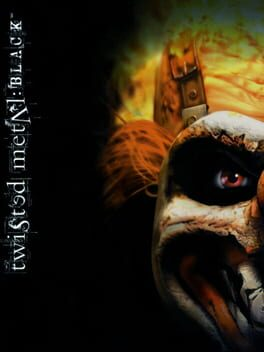Trivia Browser
Platform: Sega Mega Drive/Genesis
▲
2
▼
"Blast processing" is a marketing term coined by Sega of America to promote the Sega Genesis as the cooler and more powerful console compared to the SNES. It was such an effective campaign that it caused Nintendo to spend millions of dollars to ramp up their own smear campaign to rebut the claims, helping to create the textbook example of a "console war" between two rivaling video game companies through aggressive marketing and advertising. It is true that Blast processing as presented in advertisements at the time does not exist in any released Genesis game, but its creation was based on a real, low-level progressive processing method that ultimately went unused by developers.
The basic idea is that the hardware's video processor is "blasted" continuously, with the Genesis' 68000 processor working flat-out to change the color of every individual pixel during an active scan, a process where the "guns" on a CRT screen move from left to right and then down to the next line and so on. It was believed at the time that this function could be used to increase the Genesis' somewhat constrained color palette to showcase 256 color static images if timed right (this number would be exceeded by other developers like Jon Burton from Traveller's Tales who later discovered the trick).
Sega of America Senior Producer Scott Bayless claimed that Sega technical director Marty Franz first discovered the trick by "hooking the scan line interrupt and firing off a DMA [direct memory access] at just the right time", as firing it off at the wrong time would result in the scan lines appearing out of phase. This timing/synchronization issue, on top of the more pressing issue of the feature using all of the 68000's CPU time (meaning that while you could run the feature, you couldn't actually play the games that use it), effectively made it useless for cartridge games, and no shipped Genesis games ever used the feature. It’s speculated that it could have been used for Sega CD games, as the add-on had its own CPU that could run the feature, but this also did not come to pass.
The people responsible for the name "Blast processing" are Bayless and Sega of America's PR team. They interviewed him about the specs of the console, and he described to them how the feature could "blast data into the DAC's [digital-to-audio converters]". When talking about how the name came about, he assumed the PR team just liked the word "blast" without understanding what Bayless was explaining, and Blast processing was invented by them to more easily and vaguely sum up the technical capabilities of the Genesis when marketing it. Bayless later expressed reservations about the phrase, calling it "ghastly".
It should also be noted that this feature was not exclusive to the Genesis. In 2020, former Sculptured Software programmer Jeff Peters claimed that they discovered a similar technical trick on the SNES before Sega started using the phrase, but it was focused on audio rather than graphics. He claims that when porting Mortal Kombat to the SNES, Sculptured Software encountered an issue where the amount of graphics data being put onto the cartridge meant that sound had to be cut back drastically. To overcome this problem, Peters and his team used a homegrown system which allowed them to read sounds from the cartridge one at a time and blast them directly to a buffer in the sound memory. While the two tricks were achieving different things, it's interesting to note that both were possible on either console, despite Sega's insistence that only the Genesis could achieve Blast processing.
The basic idea is that the hardware's video processor is "blasted" continuously, with the Genesis' 68000 processor working flat-out to change the color of every individual pixel during an active scan, a process where the "guns" on a CRT screen move from left to right and then down to the next line and so on. It was believed at the time that this function could be used to increase the Genesis' somewhat constrained color palette to showcase 256 color static images if timed right (this number would be exceeded by other developers like Jon Burton from Traveller's Tales who later discovered the trick).
Sega of America Senior Producer Scott Bayless claimed that Sega technical director Marty Franz first discovered the trick by "hooking the scan line interrupt and firing off a DMA [direct memory access] at just the right time", as firing it off at the wrong time would result in the scan lines appearing out of phase. This timing/synchronization issue, on top of the more pressing issue of the feature using all of the 68000's CPU time (meaning that while you could run the feature, you couldn't actually play the games that use it), effectively made it useless for cartridge games, and no shipped Genesis games ever used the feature. It’s speculated that it could have been used for Sega CD games, as the add-on had its own CPU that could run the feature, but this also did not come to pass.
The people responsible for the name "Blast processing" are Bayless and Sega of America's PR team. They interviewed him about the specs of the console, and he described to them how the feature could "blast data into the DAC's [digital-to-audio converters]". When talking about how the name came about, he assumed the PR team just liked the word "blast" without understanding what Bayless was explaining, and Blast processing was invented by them to more easily and vaguely sum up the technical capabilities of the Genesis when marketing it. Bayless later expressed reservations about the phrase, calling it "ghastly".
It should also be noted that this feature was not exclusive to the Genesis. In 2020, former Sculptured Software programmer Jeff Peters claimed that they discovered a similar technical trick on the SNES before Sega started using the phrase, but it was focused on audio rather than graphics. He claims that when porting Mortal Kombat to the SNES, Sculptured Software encountered an issue where the amount of graphics data being put onto the cartridge meant that sound had to be cut back drastically. To overcome this problem, Peters and his team used a homegrown system which allowed them to read sounds from the cartridge one at a time and blast them directly to a buffer in the sound memory. While the two tricks were achieving different things, it's interesting to note that both were possible on either console, despite Sega's insistence that only the Genesis could achieve Blast processing.
https://www.eurogamer.net/digitalfoundry-2019-blast-processing-retro-analysis
https://www.youtube.com/watch?v=o8qgArSqMsc
https://www.timeextension.com/news/2022/09/the-man-behind-segas-blast-processing-gimmick-is-sorry-for-creating-that-ghastly-phrase
https://www.nintendolife.com/news/2020/05/segas_blast_processing_we_did_it_on_the_snes_first_says_former_sculptured_software_dev
https://www.youtube.com/watch?v=o8qgArSqMsc
https://www.timeextension.com/news/2022/09/the-man-behind-segas-blast-processing-gimmick-is-sorry-for-creating-that-ghastly-phrase
https://www.nintendolife.com/news/2020/05/segas_blast_processing_we_did_it_on_the_snes_first_says_former_sculptured_software_dev
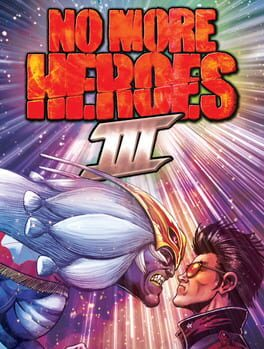
▲
1
▼
In a 2022 interview with the game's director and writer Goichi “Suda 51” Suda published on the Gematsu website, he talked about the long wait time between numbered entries in the series being broken with No More Heroes III and how they tried to cater to their audience after years of fan demand:
“Yeah, 11 years is a long time; like longer than the usual lifespan of a platform itself. The game we had developed on the Wii ended up jumping generations and landing on the Switch, and it was, hm, how do I put it… It actually felt like we were able to come back to the world of No More Heroes pretty smoothly. But even within our studio, first, we needed to ensure that people knew about No More Heroes 1 and 2. What sort of games they are, and how much the fans loved them… I feel like that was our actual starting point.”
“So obviously, we had our own image of what kind of III we wanted to create, but there’s also the III that the fans wanted to see; the III they were imagining. So in development we tried to make sure that those visions of III overlapped as much as possible.”
“So obviously, we had our own image of what kind of III we wanted to create, but there’s also the III that the fans wanted to see; the III they were imagining. So in development we tried to make sure that those visions of III overlapped as much as possible.”
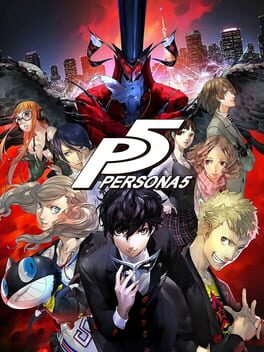
▲
1
▼
Fans believe Suguru Kamoshida is based off of former judo gold medalist Masato Uchishiba who spent 5 years in prison for rape and had all his medals and honors revoked.
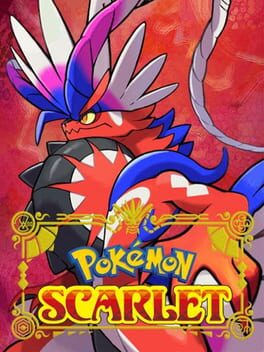
subdirectory_arrow_right Pokémon Violet (Game)
▲
1
▼
Although the Paldea region is based on Iberia, its starters may take inspiration from the modern culture and fauna of New World places that Spain and Portugal colonized and influenced. Specifically:
•The Skeledirge line may represent Mexico. Its name, secondary ghost-typing, and skeletal imagery evokes Mexico's Día de Los Muertos (Day of the Dead), a celebration of the former lives of deceased loved ones where, among other things, celebrators may dress in flamboyantly colored costumes and paint skulls on their faces. Crocalor also has a head growth resembling a Sombrero. This and the line's theme of singing to attack may also be a reference to Mariachi folk music. In a fauna sense, Crocodiles are also endemic to Mexico.
•Quaquaval's influence may derive from Brazil's culture. This can be seen in the name which has elements of Carnival, a Catholic festive season popularly celebrated in Brazil with lavish parades. In addition, it being part fighting-type and being dance-themed may be based on the Brazilian martial art of Capoeira, a fighting style that heavily resembles dancing in many of its moves. Quaquaval is also based upon the South American Crested Duck.
•Meowscarada, while possibly taking inspiration from Iberia itself with its resemblance to the Iberian Lynx, could also take cues from the Southern United States, specifically the State of Louisiana. This is because New Orleans, in Louisiana, is known for its Mardi Gras (Fat Tuesday) celebrations as part of Carnival, which iconically feature performers in elaborate masks, hence Meowscarada's name evoking the word Mascarade. Although Louisiana was influenced by France, it was also conquered by Spain later, along with a lot of the Southern U.S. It may also be based on Louisiana's prominent diasporic religion surrounding Voodoo. Meowscarada's species may furthermore be based off of the Bobcat/Red Lynx, a relative of the Iberian Lynx.
•The Skeledirge line may represent Mexico. Its name, secondary ghost-typing, and skeletal imagery evokes Mexico's Día de Los Muertos (Day of the Dead), a celebration of the former lives of deceased loved ones where, among other things, celebrators may dress in flamboyantly colored costumes and paint skulls on their faces. Crocalor also has a head growth resembling a Sombrero. This and the line's theme of singing to attack may also be a reference to Mariachi folk music. In a fauna sense, Crocodiles are also endemic to Mexico.
•Quaquaval's influence may derive from Brazil's culture. This can be seen in the name which has elements of Carnival, a Catholic festive season popularly celebrated in Brazil with lavish parades. In addition, it being part fighting-type and being dance-themed may be based on the Brazilian martial art of Capoeira, a fighting style that heavily resembles dancing in many of its moves. Quaquaval is also based upon the South American Crested Duck.
•Meowscarada, while possibly taking inspiration from Iberia itself with its resemblance to the Iberian Lynx, could also take cues from the Southern United States, specifically the State of Louisiana. This is because New Orleans, in Louisiana, is known for its Mardi Gras (Fat Tuesday) celebrations as part of Carnival, which iconically feature performers in elaborate masks, hence Meowscarada's name evoking the word Mascarade. Although Louisiana was influenced by France, it was also conquered by Spain later, along with a lot of the Southern U.S. It may also be based on Louisiana's prominent diasporic religion surrounding Voodoo. Meowscarada's species may furthermore be based off of the Bobcat/Red Lynx, a relative of the Iberian Lynx.

subdirectory_arrow_right Pokémon Violet (Game)
▲
1
▼
Tandemaus and Maushold may have dark origins as they may be based on the concept of a "Rat King", where several rats' tails are tied together or tangled by a person (although there have been reported cases of this happening without human interference). Explaining the German-sounding name of the Pokémon, the Rat King concept is named after the German term "Rattenkonig" which, in turn, is based on the villain of the same name from the short story "The Nutcracker and the Mouse King" who is sometimes depicted as being comprised of several mice or rats.
Also the Pokémon themselves may be aesthetically based on toy-like dioramic objects called "Sylvian Families" in Japan (or "Calico Critters" in English countries) which are essentially dressed-up mouse dolls in different whimsical small settings that make the mice look more like a human family. These Sylvian Families started in Japan in the 1980s, which is when many of the veteran developers at Game Freak would have grown up.
Also the Pokémon themselves may be aesthetically based on toy-like dioramic objects called "Sylvian Families" in Japan (or "Calico Critters" in English countries) which are essentially dressed-up mouse dolls in different whimsical small settings that make the mice look more like a human family. These Sylvian Families started in Japan in the 1980s, which is when many of the veteran developers at Game Freak would have grown up.
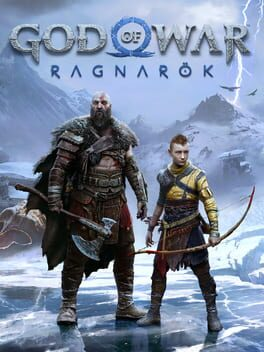
This trivia has been marked as "Not Safe for Work".
It may not be appropriate for all visitors and definitely isn't appropriate for work or school environments.
Click here to unhide it.
It may not be appropriate for all visitors and definitely isn't appropriate for work or school environments.
Click here to unhide it.
▲
2
▼
Franchise: Pokémon
▲
1
▼
In a Q&A with Game Informer in 2019, producer Junichi Masuda revealed that programmer Koji Nishino was given the nickname "Kabi" after Nintendo's Kirby ("カービィ" or "Kabi" in Japanese) because of his big appetite. Nishino's behavior and appetite would serve as a direct inspiration for the design of the Pokémon Snorlax, including Snorlax's habit of constantly eating and sleeping, as well as its Japanese name "Kabigon", which was derived from Nishino's nickname. This means that by association, Snorlax's name is technically derived from Kirby.

subdirectory_arrow_right Pokémon Violet (Game)
▲
1
▼
In the mission Starfall Street, at the request of the enigmatic Cassiopeia, the player must face off against Team Star and their five leaders who command five sects of the group. Spoiler:Eventually, It's revealed that Cassiopeia is actually their leader manipulating the player to take down her peons. This is forehadowed through references in both Cassiopeia and the Team Star sects' names. Cassiopeia is the name of an M-shaped constellation in the night sky, and the names of the leaders' different sects are all the names of the five main stars of the constellation itself: Segin, Ruchbah, Navi, Schedar, and Caph. In addition, the geological positions of the Team Star leaders' bases on the map of Paldea reflects the appearance of the Cassiopeia constellation as well.

subdirectory_arrow_right Pokémon Violet (Game)
▲
1
▼
Professor Sada and Professor Turo's names possibly come from the Spanish words for "past" and "future" respectively: "pasada" and "futuro". Spoiler:This is expanded upon by the fact that Sada plays an important role in Scarlet (which is past themed) and Turo plays an important part of Violet (which deals with the future).
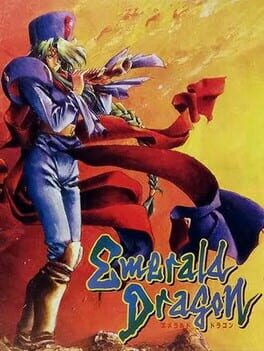
▲
1
▼
In a 1995 interview with the game's designer and illustrator Akihiro Kimura published in Dengeki Super Famicom magazine, he stated that with Emerald Dragon, he consciously tried to change up his art style up for its different incarnations. This was partly due to him thinking his drawing improved somewhat, but also that the amount of time it was taking him and his team to make the game naturally made him want to try different things out to keep himself from getting bored. The illustrations he did for the game's 1994 light novel were especially different, but for the Super Famicom version, he made sure the overall game's image remained unified, and ultimately didn't change too many things from the PC version.

subdirectory_arrow_right Pokémon Violet (Game)
▲
1
▼
 The games' Paldea region is inspired by the real-life Iberian Peninsula in Europe where countries like Spain and Portugal are. In a lot of areas of Paldea, this can be seen:
The games' Paldea region is inspired by the real-life Iberian Peninsula in Europe where countries like Spain and Portugal are. In a lot of areas of Paldea, this can be seen: •The Glaseado Mountains are based on the Pyrenees Mountains that separate Spain and France
•The large amount of caves in the region are possibly based on Spain's own large amount of caves, such as the Malaga Province's Caves of Nerja
•The real life Andalusia Region, known for its olive fields and sunflowers, is the inspiration for the Paldean cities of Cortondo and its similar olive fields, and Artazon and its sunflora connection
•Naranja/Uva Academy is architecturally based on La Sagrada Familia (The Holy Family) in Barcelona, an old landmark church that is still in an unfinished state to this day, among other inspirations.
•The regional variants on old Pokémon also reflect this; for instance, Paldea's black-furred Fighting-type variant of Taurus represents a Spanish Fighting Bull.

subdirectory_arrow_right Pokémon Violet (Game)
▲
1
▼
Nacli, Naclstack, and Garganacl's English names all feature the shared letter sequence "NACL". This is referencing the scientific designation for the elemental compound of salt: NaCl (Sodium Chloride).
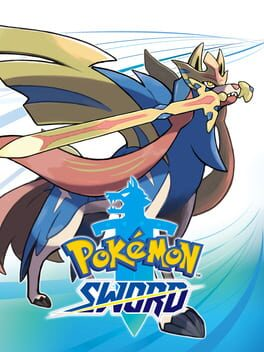
subdirectory_arrow_right Pokémon Shield (Game)
▲
1
▼
The Pokémon Centers in the game were inspired by British pubs that concept art designer Shigeru Ohmori saw throughout the United Kingdom during a trip there. The intention was to portray an area in the Galar region were people of all kinds could come to hang out and watch the spectacle of the region's Broadcasted Gym Battles.
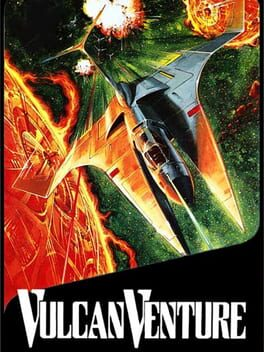
▲
1
▼
In a 1988 interview with the game's manager Kouji Hiroshita published in GSLA, he stated that the first stage they made was the fifth stage, Revenge of Moai, because the Moai were a mainstay in the series and their character design had already been established. The thought for that stage was to stuff it with as many Moai as possible.
After that, they created the first stage, Artificial Sun. The purpose of the stage was to give the player have a chance to power up, but they thought if the player was given a bunch of power-ups, it would be boring. They wanted something where expert players could gain power-ups easily, and where the more players tried to power-up, the more changeling the enemy attacks would become.
After that, they created the first stage, Artificial Sun. The purpose of the stage was to give the player have a chance to power up, but they thought if the player was given a bunch of power-ups, it would be boring. They wanted something where expert players could gain power-ups easily, and where the more players tried to power-up, the more changeling the enemy attacks would become.
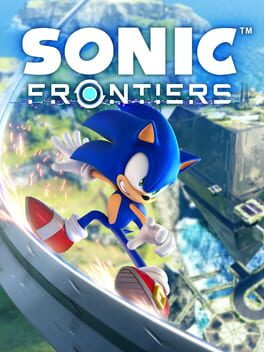
▲
1
▼
 In rare instances throughout the game, characters that didn't appear in Sonic Frontiers are referenced in passing, such as Cream, Shadow, Rouge, Blaze, Jet, Omega, Yacker the Wisp, and Zavok of the Deadly Six. However two of these voice lines reference Sticks the Badger and Tangle the Lemur, two characters who have not appeared in the mainline game series at all. While Sticks previously had a character page among other mainline characters on the Japanese Sonic Channel website, she has so far only appeared in the spin-off series Sonic Boom, while Tangle has so far only appeared in IDW Publishing's Sonic the Hedgehog comic book series. Thus Sonic's name drop of them in this mainline title essentially establishes the characters as canon to the Sonic game series. This Easter egg came about due to the fact that Sonic Frontiers' writer Ian Flynn is also a co-writer of the IDW comic series, and Flynn later confirmed that he added Sticks' name to the game's script both as a way to introduce her into the mainline Sonic canon, and to test the boundaries of what Sega would let him include in the game. However, he also added that he couldn't promise future appearances of her in mainline games. Flynn had originally planned for Sticks to make her canon debut in the IDW comics: the ending of the "Battle for Angel Island" arc would have revealed that she had been living on the island. This was declined by Sega. As for Tangle, while not directly related to her appearance in Frontiers, Flynn has stated that Sega fully owns the IDW characters, thus making it possible to use them in games.
In rare instances throughout the game, characters that didn't appear in Sonic Frontiers are referenced in passing, such as Cream, Shadow, Rouge, Blaze, Jet, Omega, Yacker the Wisp, and Zavok of the Deadly Six. However two of these voice lines reference Sticks the Badger and Tangle the Lemur, two characters who have not appeared in the mainline game series at all. While Sticks previously had a character page among other mainline characters on the Japanese Sonic Channel website, she has so far only appeared in the spin-off series Sonic Boom, while Tangle has so far only appeared in IDW Publishing's Sonic the Hedgehog comic book series. Thus Sonic's name drop of them in this mainline title essentially establishes the characters as canon to the Sonic game series. This Easter egg came about due to the fact that Sonic Frontiers' writer Ian Flynn is also a co-writer of the IDW comic series, and Flynn later confirmed that he added Sticks' name to the game's script both as a way to introduce her into the mainline Sonic canon, and to test the boundaries of what Sega would let him include in the game. However, he also added that he couldn't promise future appearances of her in mainline games. Flynn had originally planned for Sticks to make her canon debut in the IDW comics: the ending of the "Battle for Angel Island" arc would have revealed that she had been living on the island. This was declined by Sega. As for Tangle, while not directly related to her appearance in Frontiers, Flynn has stated that Sega fully owns the IDW characters, thus making it possible to use them in games.
Article on character references:
https://www.thegamer.com/sonic-frontiers-jet-tangle-cream-blaze-sticks-references/
Sonic Frontiers - Sticks the Badger reference:
https://www.youtube.com/watch?v=xehEP9CKMQk?t=25
Sonic Frontiers - Tangle the Lemur reference:
https://www.youtube.com/watch?v=QQJv3CddjJE?t=9
Bumblekast - April 30, 2022
https://www.youtube.com/watch?v=RSPwaUS_7IE&t=3105
Bumblekast - July 6, 2022:
https://www.youtube.com/watch?v=wLZ2y0mwbqc#t=1305
Bumblekast - December 31, 2022:
https://www.youtube.com/watch?v=LefotqRPlzU&t=3535s
https://www.thegamer.com/sonic-frontiers-jet-tangle-cream-blaze-sticks-references/
Sonic Frontiers - Sticks the Badger reference:
https://www.youtube.com/watch?v=xehEP9CKMQk?t=25
Sonic Frontiers - Tangle the Lemur reference:
https://www.youtube.com/watch?v=QQJv3CddjJE?t=9
Bumblekast - April 30, 2022
https://www.youtube.com/watch?v=RSPwaUS_7IE&t=3105
Bumblekast - July 6, 2022:
https://www.youtube.com/watch?v=wLZ2y0mwbqc#t=1305
Bumblekast - December 31, 2022:
https://www.youtube.com/watch?v=LefotqRPlzU&t=3535s
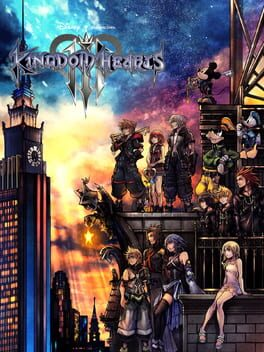
▲
1
▼
 The Dawn Till Dusk keyblade was a pre-order bonus in participating 7-Eleven stores in Japan, having the green and orange color scheme resembling the 7-Eleven brand. Its name also references the store's hours of operation: Dawn (7:00AM) Till Dusk (11:00PM).
The Dawn Till Dusk keyblade was a pre-order bonus in participating 7-Eleven stores in Japan, having the green and orange color scheme resembling the 7-Eleven brand. Its name also references the store's hours of operation: Dawn (7:00AM) Till Dusk (11:00PM).However, In the U.S., it was a pre-order bonus for those who bought the game through the Amazon website. It was later made available as purchasable DLC through both the PlayStation Store and Microsoft Store.

subdirectory_arrow_right Doom (Game)
This trivia has been marked as "Not Safe for Work".
It may not be appropriate for all visitors and definitely isn't appropriate for work or school environments.
Click here to unhide it.
It may not be appropriate for all visitors and definitely isn't appropriate for work or school environments.
Click here to unhide it.
▲
1
▼

subdirectory_arrow_right 7 Up (Franchise)
▲
3
▼
 In Cool Spot's manual, a promotional campaign was advertised where players could win a "Cool Prize" if they beat the game under certain circumstances. If you beat the game on any difficulty under Hard, use any of the six "UNCOLA" letters as a free continue, or fail to collect any of the letters at all, you will be greeted with a screen featuring a pair of Spots crying because you did not meet the requirements to win the contest. However, if you beat the game on Hard and have all six "UNCOLA" letters, then you will instead be greeted with a screen of a Spot holding a camera instructing the player to take a picture of the screen and mail it to the address in the game's manual, the headquarters of Virgin Games. This contest ended on December 31, 1993, roughly 8 months after the original Genesis version was released, and not even 4 months after the SNES version was released. According to a TV Tropes entry, the prize was allegedly a cheap plastic Spot toy, although there has been no official confirmation on what prizes were awarded to winners, if any.
In Cool Spot's manual, a promotional campaign was advertised where players could win a "Cool Prize" if they beat the game under certain circumstances. If you beat the game on any difficulty under Hard, use any of the six "UNCOLA" letters as a free continue, or fail to collect any of the letters at all, you will be greeted with a screen featuring a pair of Spots crying because you did not meet the requirements to win the contest. However, if you beat the game on Hard and have all six "UNCOLA" letters, then you will instead be greeted with a screen of a Spot holding a camera instructing the player to take a picture of the screen and mail it to the address in the game's manual, the headquarters of Virgin Games. This contest ended on December 31, 1993, roughly 8 months after the original Genesis version was released, and not even 4 months after the SNES version was released. According to a TV Tropes entry, the prize was allegedly a cheap plastic Spot toy, although there has been no official confirmation on what prizes were awarded to winners, if any.One known "winner" of the contest years after the fact was YouTuber Jirard Khalil "The Completionist", who reviewed the game and instead of sending his screen to the now-defunct Virgin Games, he decided to tweet it out to 7 Up's official Twitter account in 2014. This caught their attention for being "crazy, old school and incredible", resulting in them direct-messaging him and asking for his address to send him a prize. The following week, a bizarre PR stunt took place where two "7 Up Women" arrived at The Completionist's offices, bringing with them a pallet of assorted 7 Up, Diet 7 Up, Cherry 7 Up, Sunkist and Snapple drinks, as well as free sunglasses and loudspeakers. Khalil described the event: "They had no idea why they were there, I didn't know why they were there, it was an overall weird experience to say the least."
The Completionist - Cool Spot episode:
https://www.youtube.com/watch?v=0WGMxS04HLg#t=800
TV Tropes entry with unproven claim of contest prize:
https://tvtropes.org/pmwiki/pmwiki.php/VideoGame/CoolSpot
7 Up tweet:
https://twitter.com/7up/status/541985561595375617
The Completionist - Rare picture of Jirard, Greg and the 7 Up Women:
https://imgur.com/Npz3rg8
https://www.youtube.com/watch?v=0WGMxS04HLg#t=800
TV Tropes entry with unproven claim of contest prize:
https://tvtropes.org/pmwiki/pmwiki.php/VideoGame/CoolSpot
7 Up tweet:
https://twitter.com/7up/status/541985561595375617
The Completionist - Rare picture of Jirard, Greg and the 7 Up Women:
https://imgur.com/Npz3rg8


